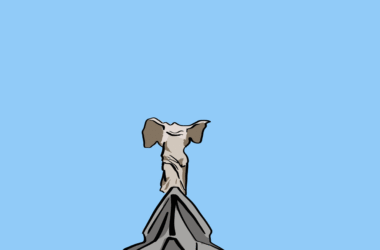 (inspiritmagazine.net)(travelpod.com)(Noah Caldwell-Rafferty / McGill Tribune)
(inspiritmagazine.net)(travelpod.com)(Noah Caldwell-Rafferty / McGill Tribune) (inspiritmagazine.net)(travelpod.com)(Noah Caldwell-Rafferty / McGill Tribune)
(inspiritmagazine.net)(travelpod.com)(Noah Caldwell-Rafferty / McGill Tribune)Every two years McGill’s department of geography sends a group of McGill students on an environmental field study in Barbados.
Led by Professor Thom Meredith this year, 14 students touched down on Feb. 18 to spend reading week studying in the field, albeit on a tropical island known for its rum. As the week passed, the students donned the outfits of zealous environmentalists, eager to show the island their own brand of socially responsible stewardship.
I was part of a four-person subgroup which interviewed farmers about crop damage inflicted by the island’s most notorious pest—the green monkey—seeking a better understanding of the different obstacles facing farmers in Barbados. Driving through a narrow pass cut away from the surrounding coral limestone, our van bucked and whined, climbing the last hill before depositing us on the side of Mt. Hillaby, the highest point in Barbados. Dotted with tumbledown windmills and decrepit farmhouses, these hills used to be home to vast fields of sugar cane. However, the nation’s agricultural economy has recently been overtaken by tourism, signs of which we gratefully left behind us as we climbed higher away from the coast. Arriving in the village of Hillaby, we came at last to the land of the green monkey, a cunning invasive primate whose penchant for crop destruction we were researching.
The van came to a halt beside a three-acre field of cabbage, tomatoes, yams, and countless other crops winding their way up the steep slope of Mt. Hillaby. Eying us curiously, the plot’s farmer, Reverend Ward, approached and beckoned us along to tour his land. Like other farmers in the area, the Reverend battles every day with green monkeys, which indiscriminately eat and destroy his fruit and vegetable crops. Living next to a gully, he is especially vulnerable to the area’s high primate population, which can destroy up to 50 per cent of a plot’s planted vegetation.
Although the government offers one solution—a bounty of $15 for the tail of any unlucky monkey caught unaware by an embittered farmer—alternative methods of mitigating the problem are often employed. For Reverend Ward, it’s an aloe and hot pepper spray which deters the pests. For other farmers and gardeners we met later on, the methods were often more elaborate or more gruesome: guard dogs which will attack the aggressive monkeys found in each roving group; home-made and improvised traps; and, in one instance, stringing up a dead monkey’s body to caution any future intruders.
At first glance, the problem of the green monkey seems purely ecological and isolated from larger scale issues. But all things in Barbados are inherently linked, unable to escape the dynamic interconnectivity of an island so small. Rampant coastal development has displaced monkeys, forcing them into new areas and more confined spaces. The extremely adaptable green monkeys have wasted no time acclimating to new feeding grounds, which are almost exclusively farmers’ fields. Unequivocal government support for the expanding tourism industry has taken the policy spotlight away from agriculture, leaving small-scale farmers to their own devices as they struggle to endure both the rising cost of living and the loss of crops.
To witness the indirect hazards of development so far from its source—which is mainly the coastal zone, miles away from Mt. Hillaby—is to see the real product of a nation’s “progress,” as it is considered by those in power. Increasing human-wildlife conflict due to development leaves farmers economically vulnerable too. Direct loss of crops, time spent eradicating pests, and money spent on mitigation measures all add up to substantial economic dents in a small farmer’s operation. This further hinders the island’s ability to maintain diverse sources of livelihood and avoid becoming solely a service-based tourism economy.
Needing only slight coaxing to speak with us—being the untanned out-of-place academics that we were—the locals all chatted freely about the unabated destruction at the hands of the green monkey. One pair of colourful characters, whose language regarding the pest was unpublishable to say the least, produced for us a writhing, panicked young monkey which had been caught recently. Holding it firmly around the neck and tail, the taller one explained the animal’s prospects: death, which would reward its captor with the government bounty; being sold to the Barbados Wildlife Reserve for $50; or being sold at a higher rate privately, prolonging the miserable creature’s imprisonment. The proud holder said he had yet to make up his mind.
Demonstrating the peculiarities which ecological and economic change can produce, the two Barbadians summed up their view on the green monkey: “I love them, they make me money,” the captor said gleefully. “I hate them,” the other scoffed back, “they cost me money.” Two years ago he had lost his farm partly due to the monkeys’ unbridled devastation of crops.
Fleeing the afternoon heat, our four-person research team piled into a rickety yellow bus, packed in like ruddy sweating sardines, and headed for the capital, Bridgetown. Reaching downtown, we walked on to Queen’s Park, where the country’s prime-time weekend event, Agrofest, was being held. Horticulturalists, livestock raisers, small farmers, government ministries, and the public all swarmed the park, perusing exhibits or purchasing plants and other amenities. Scanning the crowd of thousands, I found it hard to believe Barbadian agriculture had any problems whatsoever. Of course, the problems are myriad, and the green monkey is just one. But the interest at Agrofest showed the brave stubbornness of a people whose history was built upon agriculture—a sentiment echoed by a smiling plant nursery owner who told us, “In some ways it is worse than ever. But we’ll stay on top of it, each and every day, just like we always have.”





